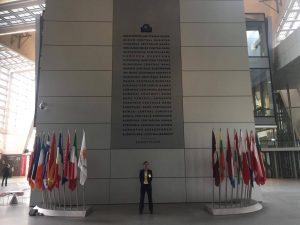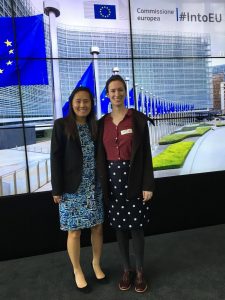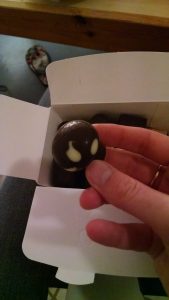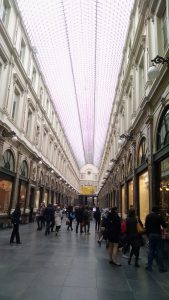I have just returned from the second field study trip on the docket for my program, and was it a blast! This trip was what is called the Institutions trip, meaning we visited institutions of the EU, like the Commission and the Consul, as well as the European Central Bank and the European Court of Justice. We were seperated mainly by area of study, so as a mathematics/economics major, I went to the European Central Bank (to be referred to as the ECB in this post). We also had a series of independent meetings with people from think tanks, lobbyists, and members of governments.
The speaker from the ECB was fascinating! He was probably no older than his early-mid 30s, but it was evident that he already had an established career at the bank. He went through a general explanation of the ECB’s structure and function, then spoke some about how it compared to the US’s Federal Reserve bank (the Fed). HE then spoke some on the US recession, and how that spread to Europe, and where Europe is now. He concluded with talking some about programs that he is a part of. One I found very interesting are the Deposit Protection/Guarentee schemes, which would work to ensure that, if another crisis happened in Europe, and people wanted to withdraw their money from the banks, they would be able to do so. As I understand it, enacting an EU-wide adoption of this policy is in the works.
From Frankfurt, we made our way to Brussels, which is the seat of the European Commission and Consul. Our first day there, we visited the Commission and listened to presentations from two men, one, the Deputy Chief of the EU’s counterpart to our Border Control, and the other, the Director – Head of the Support Group for Ukraine. It was very interesting to learn about how refugees get into the EU, and what is being done to lower the death rate of those who drown when they come by sea.
Later in the day, we had course-specific excursions. Our professors and program leaders had set up meetings with personnel relevant to our studies so that we could get a more hands on perspective of what we’re learning in the class room. I attended a meeting with the Head of Communications of the lobbying groups WSBI and ESBG. I knew nothing about lobbying, so it was so interesting to be able to get an in-depth, professional perspective.
The city of Brussles itself is very interesting; it is the only real place in Belgium where the French, German, and Dutch populations intermingle; the rest of the country is divided by spoken language, with the North being Dutch, or Flemish, the south French, of Walloon, and a tiny bit to the east, German speaking. The groups rarely inter-marry, and, as seems to be the pattern in Europe, people rarely move away form where they were born. Brussels, in contrast, is a huge melting pot. At one point, a native said it was the second most diverse city in the world, after Dubai. While French was definitely the dominate language, there was Dutch, German, English, and other languages being spoken all over. I had a blast wandering around some on my own and using the public transportation. The city also has amazing chocolate! I got a relatively large box for not that much, and I’m slowly working my way through it~
Paris was also gorgeous. We spent less time in meetings there – we had two or three, depending on our studies. My favorite parts were the independent trip I took to the Musee d’Orsay, which is the amazing Impressionist museum. I got to see a lot from Monet, my favorite artist, and saw Degas’ famous statue, La Petite Danseuse. It was an amazing experience! Paris, besides Freiburg, is definitely my favorite of the European cities I’ve visited this trip.
I have midterms and papers these next two weeks, then Fall break, so updates will be a little sparse until after all that, but I’ll be back with more exciting adventures to share!



